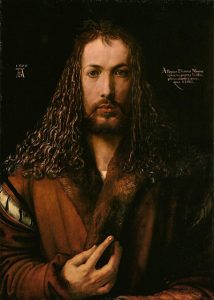September 4 2018 – AGM Lecture:
The Anatomy of Collecting – The History of Collecting and Great Collectors through History
Lecturer: Marc Allum 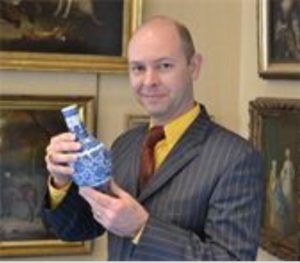 is a freelance art and antiques journalist, writer and broadcaster based in Wiltshire. He is shortly to begin his 20th year as a specialist on the BBC Antiques Roadshowand has appeared on numerous television and radio programmes. Marc regularly writes for mainstream magazines and is an author, antiques consultant and lecturer. He also runs a fine art valuation and consultancy service. Marc has his own unique style with interests ranging from pre-history to modern design and is a self-confessed collectaholic. He has a passion and reputation for divining the unusual through ‘a desire to connect with history through the interpretation and pursuit of objects and their origins’. Marc has lectured widely for many years to a number of different organisations in both the public and charity sectors, including travel companies, The National Trust, the WI and many literary festivals including Cheltenham, Bath, Wells and Petworth.
is a freelance art and antiques journalist, writer and broadcaster based in Wiltshire. He is shortly to begin his 20th year as a specialist on the BBC Antiques Roadshowand has appeared on numerous television and radio programmes. Marc regularly writes for mainstream magazines and is an author, antiques consultant and lecturer. He also runs a fine art valuation and consultancy service. Marc has his own unique style with interests ranging from pre-history to modern design and is a self-confessed collectaholic. He has a passion and reputation for divining the unusual through ‘a desire to connect with history through the interpretation and pursuit of objects and their origins’. Marc has lectured widely for many years to a number of different organisations in both the public and charity sectors, including travel companies, The National Trust, the WI and many literary festivals including Cheltenham, Bath, Wells and Petworth.
October 10 2018 – Sir Anthony Van Dyck: Prince of Painters
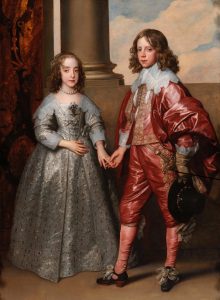 Few painters can claim greater influence over the development of British Art than Van Dyck. His fluid and colourful Baroque style, inspired by a love of Venetian painters such as Titian, eradicated the stiff painting of Elizabethan and Jacobean England. Apart from transforming British portraiture, his exuberant mythological and religious works matched, and at times even outstripped, those achieved by his master, Rubens. This talk will not only focus on his life, travels and key works, but also chart his influence on British Art throughout the eighteenth and nineteenth centuries.
Few painters can claim greater influence over the development of British Art than Van Dyck. His fluid and colourful Baroque style, inspired by a love of Venetian painters such as Titian, eradicated the stiff painting of Elizabethan and Jacobean England. Apart from transforming British portraiture, his exuberant mythological and religious works matched, and at times even outstripped, those achieved by his master, Rubens. This talk will not only focus on his life, travels and key works, but also chart his influence on British Art throughout the eighteenth and nineteenth centuries.
Lecturer: Adam Busiakiewicz 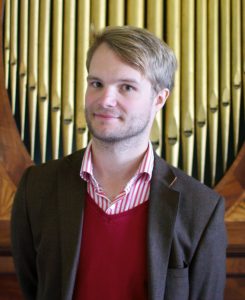 is an Art Historian, lutenist and lecturer. After completing his Bachelor’s Degree in History at UCL in 2010 he held the position of Head of Historical Interpretation (curator) at Warwick Castle. He left the castle in 2013 after winning a full AHRC studentship to pursue a Master’s Degree in Fine and Decorative Art at the Sotheby’s Institute of Art, London. He is currently pursuing his doctorate in Art History at Warwick University after winning a CADRE Postgraduate Scholarship in 2017.
is an Art Historian, lutenist and lecturer. After completing his Bachelor’s Degree in History at UCL in 2010 he held the position of Head of Historical Interpretation (curator) at Warwick Castle. He left the castle in 2013 after winning a full AHRC studentship to pursue a Master’s Degree in Fine and Decorative Art at the Sotheby’s Institute of Art, London. He is currently pursuing his doctorate in Art History at Warwick University after winning a CADRE Postgraduate Scholarship in 2017.
Earlier in December 2014 he became the youngest Guide Lecturer at the Wallace Collection, where he regularly gives talks, tours and lectures to both public and professional audiences. He has also given lectures at the National Gallery in Trafalgar Square, London, and is organising a series of talks there on the lute in paintings in 2018.
November 14 2018 – Beethoven’s Long Shadow: The Astonishing Legacy of Classical Music’s Greatest Romantic
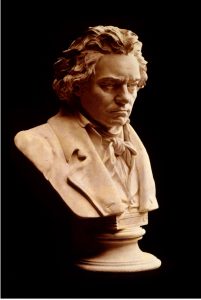 The death of Ludwig van Beethoven in March 1827 left the Austro-German composers who came after him with a serious problem: how could they possibly follow the example of this musical titan who had changed the world of classical music for ever? Some, such as Mendelssohn, Schumann and Brahms, built on the example of the past in creating a kind of Romantic Classicism, music with a self-contained logic similar to that of Bach and Mozart, but reflecting a new nineteenth-century sensibility. Others, composers like Berlioz, Liszt, Wagner and Mahler, took Beethoven’s example as a starting point for music which was boundless in its ambition: works which expanded outwards to encompass all of human experience, and ventured inwards into the wild recesses of the Romantic imagination. With the aid of selected images, recorded excerpts and live musical analysis, Sandy Burnett takes an in-depth look at this fascinating era of music making.
The death of Ludwig van Beethoven in March 1827 left the Austro-German composers who came after him with a serious problem: how could they possibly follow the example of this musical titan who had changed the world of classical music for ever? Some, such as Mendelssohn, Schumann and Brahms, built on the example of the past in creating a kind of Romantic Classicism, music with a self-contained logic similar to that of Bach and Mozart, but reflecting a new nineteenth-century sensibility. Others, composers like Berlioz, Liszt, Wagner and Mahler, took Beethoven’s example as a starting point for music which was boundless in its ambition: works which expanded outwards to encompass all of human experience, and ventured inwards into the wild recesses of the Romantic imagination. With the aid of selected images, recorded excerpts and live musical analysis, Sandy Burnett takes an in-depth look at this fascinating era of music making.
Lecturer: Sandy Burnett 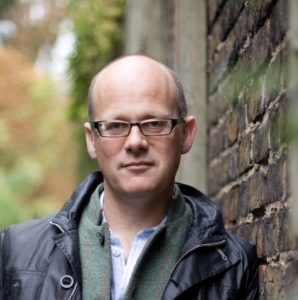 studied music at St Catharine’s College, Cambridge. After Cambridge, he worked as music director for the RSC, National Theatre and in London’s West End. Sandy Burnett then spent a decade as one of the core team of music presenters on BBC Radio 3. He currently enjoys a varied career that embraces broadcasting, conducting, playing double bass and communicating his passion for music. His radio series for Ireland’s RTÉ Lyric FM, Great Moments in Classical Music, recently won silver in the Specialist Music category of the PPI Radio Awards. He regularly leads cultural lecture holidays, and is the author of the Idler Guide to Classical Music.
studied music at St Catharine’s College, Cambridge. After Cambridge, he worked as music director for the RSC, National Theatre and in London’s West End. Sandy Burnett then spent a decade as one of the core team of music presenters on BBC Radio 3. He currently enjoys a varied career that embraces broadcasting, conducting, playing double bass and communicating his passion for music. His radio series for Ireland’s RTÉ Lyric FM, Great Moments in Classical Music, recently won silver in the Specialist Music category of the PPI Radio Awards. He regularly leads cultural lecture holidays, and is the author of the Idler Guide to Classical Music.
December 12 2018 – Women in Art: Artists: Gentileschi to Emin
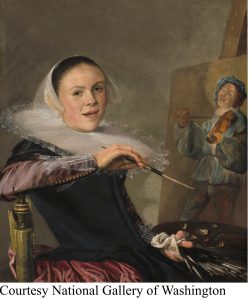 Until the 1970s an Art History student could well believe there were no women artists in the entire history of Western Art. None appeared in key texts H.W. Janson’s The History of Art(1963) nor Ernst Gombrich’s The Story of Art(original ed. 1950). Is this because there were none? Research over the past few decades has changed the subject of Art History and the Art we see in galleries and museums. This lecture will discover Old Mistresses and look at contemporary women artists: from Artemisia Gentileschi to Tracey Emin.
Until the 1970s an Art History student could well believe there were no women artists in the entire history of Western Art. None appeared in key texts H.W. Janson’s The History of Art(1963) nor Ernst Gombrich’s The Story of Art(original ed. 1950). Is this because there were none? Research over the past few decades has changed the subject of Art History and the Art we see in galleries and museums. This lecture will discover Old Mistresses and look at contemporary women artists: from Artemisia Gentileschi to Tracey Emin.
Lecturer: Lynne Gibson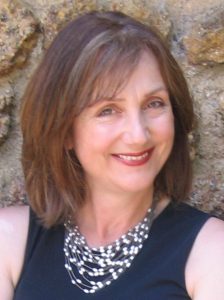 is now working as a freelance lecturer in the History of Art, Critical and Contextual Studies, as well as in practical Drawing, Painting and Printmaking. For many years she lectured for the universities of Sussex and Bristol, where she introduced ‘Understanding Art’ to the Lifelong Learning programme, and at residential summer schools. She currently g ives talks, lectures and guided tours to a wide range of organisations and institutions including ARCA colleges, the National Trust, National Gallery, art museums and art societies. Also, when time permits, works as a professional artist specializing in oil painting and etching. Solo and group shows have included the RWA, British Museum and the Barbican.
is now working as a freelance lecturer in the History of Art, Critical and Contextual Studies, as well as in practical Drawing, Painting and Printmaking. For many years she lectured for the universities of Sussex and Bristol, where she introduced ‘Understanding Art’ to the Lifelong Learning programme, and at residential summer schools. She currently g ives talks, lectures and guided tours to a wide range of organisations and institutions including ARCA colleges, the National Trust, National Gallery, art museums and art societies. Also, when time permits, works as a professional artist specializing in oil painting and etching. Solo and group shows have included the RWA, British Museum and the Barbican.
January 9 2019 – The Extraordinary Life of Misa Siert – 1877-1950 Queen of Paris
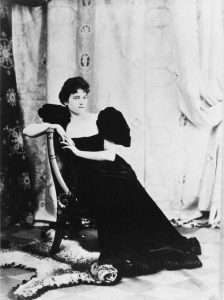 Born into a Polish family, Misia was a virtuoso pianist taught by Gabriel Fauré, before marrying Thadee Natanson owner of the magazine ‘La Revue Blanche’. She was painted many times by Toulouse-Lautrec, Pierre Bonnard, Eduard Vuillard (who was deeply in love with her), and Renoir who wanted to paint her nude. She knew Debussy and Ravel who dedicated several musical pieces to her. She later remarried a wealthy businessman and was able to finance Diaghilev’s extraordinary Russian Ballets becoming an integral part of the circle around Picasso, Stravinsky, Cocteau and Nijinsky. Her final marriage was to the Spanish muralist José Sert with whom she travelled extensively, becoming Coco Chanel’s closet friend and confidante. Misia was at the very heart of modern art and music in Paris. In 2012 Misia Sert was the subject of a major exhibition in the Musée d’Orsay.
Born into a Polish family, Misia was a virtuoso pianist taught by Gabriel Fauré, before marrying Thadee Natanson owner of the magazine ‘La Revue Blanche’. She was painted many times by Toulouse-Lautrec, Pierre Bonnard, Eduard Vuillard (who was deeply in love with her), and Renoir who wanted to paint her nude. She knew Debussy and Ravel who dedicated several musical pieces to her. She later remarried a wealthy businessman and was able to finance Diaghilev’s extraordinary Russian Ballets becoming an integral part of the circle around Picasso, Stravinsky, Cocteau and Nijinsky. Her final marriage was to the Spanish muralist José Sert with whom she travelled extensively, becoming Coco Chanel’s closet friend and confidante. Misia was at the very heart of modern art and music in Paris. In 2012 Misia Sert was the subject of a major exhibition in the Musée d’Orsay.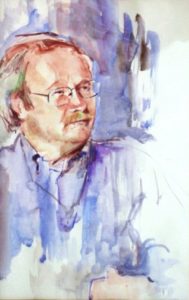
Lecturer : Julian Halsby MA Cantab, FRSA RBA studied History of Art at Cambridge. He was formerly Senior Lecturer and Head of Department at Croydon College of Art. Publications include Venice – the Artist’s Vision(1990, 1995), The Art of Diana Armfield RA(1995), Dictionary of Scottish Painters(1990, 1998, 2001, 4th edition 2010),A Hand to Obey the Demon’s Eye(2000), Scottish Watercolours 1740-1940(1986, 1991), A Private View – David Wolfers and the New Grafton Gallery (2002). Interviews artists for the Artist Magazine and is a member of the International Association of Art Critics and The Critics Circle. A practising artist, he was elected to the Royal Society of British Artists in 1994 and appointed Keeper in 2010.
February 13 2019 – Arts of Zen : Aesthetics of Simplicity
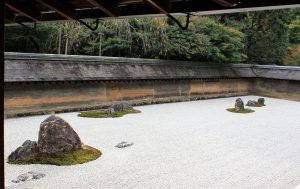 Zen Buddhism exerted a profound influence on the formation of Japanese visual culture since its introduction in the 13th century to this day. Zen Buddhism’s emphasis on the practice of meditation, self-discipline, and the austere lifestyle appealed to the patrons from the warrior class, and the Zen teaching became the dominant philosophical core that encouraged the development of the distinctive aesthetics in the 15th and 16th centuries. Many of the art forms, such as the art of ink painting, dry landscape garden, and Noh drama, developed during this period. This lecture will examine the beauty of simplicity, spiritual essence, and the close affinity to nature that characterize the arts of Zen.
Zen Buddhism exerted a profound influence on the formation of Japanese visual culture since its introduction in the 13th century to this day. Zen Buddhism’s emphasis on the practice of meditation, self-discipline, and the austere lifestyle appealed to the patrons from the warrior class, and the Zen teaching became the dominant philosophical core that encouraged the development of the distinctive aesthetics in the 15th and 16th centuries. Many of the art forms, such as the art of ink painting, dry landscape garden, and Noh drama, developed during this period. This lecture will examine the beauty of simplicity, spiritual essence, and the close affinity to nature that characterize the arts of Zen.
Lecturer : Dr Meri Arichi 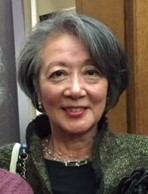 studied Art History in London and Florence, and worked at Christie’s in Kings Street, London, from 1989 to 1993. She returned to university to study Asian Art at the School of Oriental and African Studies (SOAS), University of London in 1993, and completed a Post-graduate Diploma in Asian Art (1994), MA (1996) in History of East Asian Art, and PhD (2003) for her thesis on Shinto-Buddhist syncretic Art. She has been teaching History of Japanese Art in the Department of History of Art and Archaeology at SOAS as a Teaching Fellow since 2007. She has also run courses at the Birkbeck College, V&A, British Museum, and the Courtauld Institute of Art Summer School. She has led tours to Japan and lectured on cruises.
studied Art History in London and Florence, and worked at Christie’s in Kings Street, London, from 1989 to 1993. She returned to university to study Asian Art at the School of Oriental and African Studies (SOAS), University of London in 1993, and completed a Post-graduate Diploma in Asian Art (1994), MA (1996) in History of East Asian Art, and PhD (2003) for her thesis on Shinto-Buddhist syncretic Art. She has been teaching History of Japanese Art in the Department of History of Art and Archaeology at SOAS as a Teaching Fellow since 2007. She has also run courses at the Birkbeck College, V&A, British Museum, and the Courtauld Institute of Art Summer School. She has led tours to Japan and lectured on cruises.
March 13 2019 – Greek Vase Painting
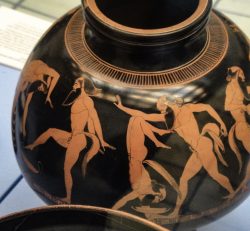 Ancient Greek painted pottery is greatly admired, and with good reason. This talk, lavishly illustrated with both slides and video, will attempt to make the beauty of Greek ceramics more readily accessible and comprehensible. It will concentrate on gaining knowledge and understanding of the physical forms, stylistic features, subject matter, composition, emotional content, function and development of ancient Greek pottery, along with the acquisition of an understanding in its historical context of the civilisation studied through its art. Emphasis will also be placed on the relevant social, political and religious contexts: how were the vases created? Why? Who for?
Ancient Greek painted pottery is greatly admired, and with good reason. This talk, lavishly illustrated with both slides and video, will attempt to make the beauty of Greek ceramics more readily accessible and comprehensible. It will concentrate on gaining knowledge and understanding of the physical forms, stylistic features, subject matter, composition, emotional content, function and development of ancient Greek pottery, along with the acquisition of an understanding in its historical context of the civilisation studied through its art. Emphasis will also be placed on the relevant social, political and religious contexts: how were the vases created? Why? Who for?
Lecturer : Dr Stephen Kershaw 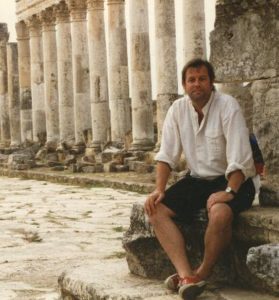 is a Classics Tutor for Oxford University Department for Continuing Education (OUDCE), Professor of History of Art for the European Studies Program of Rhodes College and The University of the South. He has spent much of the last 30 years travelling extensively in the world of the Greeks and Romans both physically, as a guest speaker for Swan Hellenic Cruises and Royal Hebridean Cruises and intellectually heauthored and teaches Oxford’s on-line Greek Mythology course for OUDCE. He has published A Brief Guide to the Greek Myths(Robinson, 2007) and A Brief Guide to Classical Civilization (Robinson, 2010) and is currently working onA Brief Guide to the Roman Empire.
is a Classics Tutor for Oxford University Department for Continuing Education (OUDCE), Professor of History of Art for the European Studies Program of Rhodes College and The University of the South. He has spent much of the last 30 years travelling extensively in the world of the Greeks and Romans both physically, as a guest speaker for Swan Hellenic Cruises and Royal Hebridean Cruises and intellectually heauthored and teaches Oxford’s on-line Greek Mythology course for OUDCE. He has published A Brief Guide to the Greek Myths(Robinson, 2007) and A Brief Guide to Classical Civilization (Robinson, 2010) and is currently working onA Brief Guide to the Roman Empire.
April 10 2019 – Antonio Gaudi and his Contemporaries
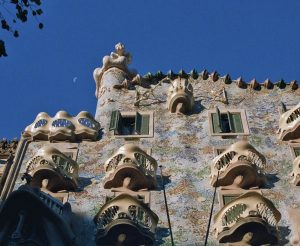 The modern skyline of Barcelona is dominated by Antonio Gaudi’s masterpiece the Sagrada Familia. But Gaudi was not alone in transforming turn-of-the-century Barcelona; Lluís Domènech i Montaner, Josep Puig i Cadafalchand Enric Sagnier all designed landmark buildings that transformed their city. These architects combined industrial materials, metal, glass and tile with fabulous ornamentation inspired by Hispano-Arabic architecture. They co-opted the progressive concepts of Art Nouveau, evolving a style that expressed both modernity and Catalonia nationalism. But Gaudi outlived his era, his last years committed to completing the Sagrada Familia, a testament to the transforming power of Art.
The modern skyline of Barcelona is dominated by Antonio Gaudi’s masterpiece the Sagrada Familia. But Gaudi was not alone in transforming turn-of-the-century Barcelona; Lluís Domènech i Montaner, Josep Puig i Cadafalchand Enric Sagnier all designed landmark buildings that transformed their city. These architects combined industrial materials, metal, glass and tile with fabulous ornamentation inspired by Hispano-Arabic architecture. They co-opted the progressive concepts of Art Nouveau, evolving a style that expressed both modernity and Catalonia nationalism. But Gaudi outlived his era, his last years committed to completing the Sagrada Familia, a testament to the transforming power of Art.
Lecturer: Anne Anderson graduated in Art History and Archaeology from Leicester University in 1978 and worked as an archaeologist for 8 years, being elected to the Society of Antiquaries in 1997. From 1993 to 2007 she was senior lecturer on the Fine Arts Valuation degree courses at Southampton Solent University, specialising  in the Aesthetic Movement, Arts & Crafts, Art Nouveau and Modernism. She is currently Hon. Research Fellow at Exeter University; a Fletcher Jones Fellow of the Huntington Library, CA; a fellow of the Henry Francis Du Pont Winterthur Museum and Library; Cumming Ceramic Research Foundation Fellow (2007 and 2010) and consultant for Lord Frederic Leighton’s Studio-House, Kensington. Her 2008 exhibition Ancient Landscapes, Pastoral Visions Samuel Palmer to the Ruralists attracted some 47,000 visitors. She has published books on Roman pottery, Art Deco teapots and Edward Burne-Jones and she will be a tutor at the V&A on the Chardin to Cézanne year course.
in the Aesthetic Movement, Arts & Crafts, Art Nouveau and Modernism. She is currently Hon. Research Fellow at Exeter University; a Fletcher Jones Fellow of the Huntington Library, CA; a fellow of the Henry Francis Du Pont Winterthur Museum and Library; Cumming Ceramic Research Foundation Fellow (2007 and 2010) and consultant for Lord Frederic Leighton’s Studio-House, Kensington. Her 2008 exhibition Ancient Landscapes, Pastoral Visions Samuel Palmer to the Ruralists attracted some 47,000 visitors. She has published books on Roman pottery, Art Deco teapots and Edward Burne-Jones and she will be a tutor at the V&A on the Chardin to Cézanne year course.
May 8 2019 – Dürer: Genius of the Northern Renaissance
Albrecht Dürer (1471-1528) – arguably the most important Germanic artist ever – stands for the representation of Italian Renaissance ideas and Humanist thought in the North of Europe. Not only was Dürer an exceptional painter and draughtsman, he was also the first to write on art theory in the Ger man language. His extensive graphic production carried Dürer’s fame well beyond his native Nürnberg.
man language. His extensive graphic production carried Dürer’s fame well beyond his native Nürnberg.
Lecturer : Eveline Eaton holds a BA Hons from the Courtauld Institute and a Diploma from the Study Centre for the History of Fine & Decorative Arts. She is a freelance lecturer in Fine Arts and tour-guide to Berlin, Dresden, Munich. She is also Chairman of the Board of Trustees of the Dresden Trust.
June 12 2019 – Libya Uncovered: Magnificent Leptis, Sabratha and Cyrene
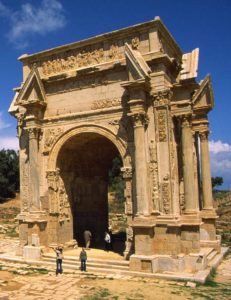 Ancient rock paintings deep in the Sahara Desert show the early artistic skills of semi-nomadic traders 10,000 years ago. The Greeks built the magnificent city of Cyrene, but the Romans made Leptis Magna the greatest city in Africa, when local leader Septimius Severus became emperor. His huge public buildings are adorned with magnificent carvings. Many of the private villas show that the 3rd century AD was the golden age of the very finest examples of Roman mosaics and art. The arrival of Islam brought new forms of mosaics, Ottoman-influenced mosques and ornate houses inside Tripoli’s old city.
Ancient rock paintings deep in the Sahara Desert show the early artistic skills of semi-nomadic traders 10,000 years ago. The Greeks built the magnificent city of Cyrene, but the Romans made Leptis Magna the greatest city in Africa, when local leader Septimius Severus became emperor. His huge public buildings are adorned with magnificent carvings. Many of the private villas show that the 3rd century AD was the golden age of the very finest examples of Roman mosaics and art. The arrival of Islam brought new forms of mosaics, Ottoman-influenced mosques and ornate houses inside Tripoli’s old city.
Lecturer: Christopher Bradley  is an expert in the history and culture of the Middle East and North Africa. As a professional tour guide and lecturer he has led groups throughout the Middle East and Asia. Has written extensively on Arabia and is the author of The Discovery Guide to Yemen, Insight Guide to the Silk Road and Berlitz Guides to Libya; The Red Sea; Cairo; Abu Dhabi and Nile Cruising. As a photographer has pictures represented by four photographic libraries. A broad range of lecturing experience, including to the Royal Geographical Society and the Royal Institute of British Architects. As a film producer and cameraman he has made documentaries for the BBC, National Geographic TV and Channel 4.
is an expert in the history and culture of the Middle East and North Africa. As a professional tour guide and lecturer he has led groups throughout the Middle East and Asia. Has written extensively on Arabia and is the author of The Discovery Guide to Yemen, Insight Guide to the Silk Road and Berlitz Guides to Libya; The Red Sea; Cairo; Abu Dhabi and Nile Cruising. As a photographer has pictures represented by four photographic libraries. A broad range of lecturing experience, including to the Royal Geographical Society and the Royal Institute of British Architects. As a film producer and cameraman he has made documentaries for the BBC, National Geographic TV and Channel 4.

